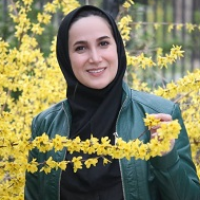Interactions between Flood Spreading and Vegetation Type on Some Biological Indices of Soil in the Gareh-Bygone Plain of Fasa (Kowsar Station)
Biochemical activities of soil have been proposed as one of the most well-known indicators of soil quality and health, which are considered in evaluating the effect of afforested species on soil characteristics. This research was conducted with the aim of investigating the long-term effect of flood spreading operation and type of vegetation on the activity of acid and alkaline phosphatase, urease and dehydrogenase enzymes and soil microbial activity, including basal respiration and stimulated respiration, in 2019.
Sampling the soil around the roots of Acacia salicina Lindl., Eucalyptus camaldulensis Dehnh., Atriplex lentiformis (Torr.) Wats. (0-20 cm depth) was carried out with 6 treatments in three replications. Statistical analyzes were performed using SPSS software as a factorial test in the form of a randomized complete block design and the means were compared with Tukey test at P<0.05.
The results showed that the interaction between flood spreading and vegetation type on the activity of acid phosphatase, alkaline phosphatase, urease, dehydrogenase, stimulated respiration and organic carbon was significant at P<0.01. The activity of acid phosphatase and alkaline phosphatase enzymes in the soil under cover of Acacia and Eucalyptus plantations was higher than the activity of these enzymes in the soil under cover of Atriplex, especially in the situation with flood spreading. The activity of urease enzyme showed the highest value in the soil under the Atriplex with flood spreading and the lowest value in the soil under the Atriplex without flood spreading, and this difference is statistically significant with Tukey's level test at P<0.05. The activity of dehydrogenase enzyme showed the highest value in the soil under the Atriplex with flood spreading and the lowest value in the soil under the Atriplex without flood spreading, and this difference is statistically significant with Tukey's test at P<0.05. Dehydrogenase activity in the soil of Atriplex with flood spreading compared to the activity of this enzyme in the soil of Acacia with flood spreading and also the activity of dehydrogenase in the soil of Acacia and Eucalyptus in the situation with flood spreading, statistically with the test Tukey did not show a difference at P<0.05. In the conditions of flood spreading, the basic respiration rate in the understory soil of Acacia, Eucalyptus and Atriplex was higher than the basic respiration in the soil under the cover of these plants without flood spreading, although the difference in the basic respiration in the two situations with flood spreading and without flooding were not statistically significant at P<0.05. The amount of stimulated respiration in the soil of Atriplex with flood spreading was higher compared to the amount of stimulated respiration in the soil of Eucalyptus with flood spreading, but it was not statistically different from the amount of stimulated respiration in the soil of Acacia with flood spreading and Acacia without flood spreading. The highest and lowest amount of stimulated respiration was observed in the soil under the cover of Acacia and Eucalyptus, respectively, in the condition without flood spreading, and these differences were statistically significant at P<0.05.
Conclusion and Recommendations:
The results of this study showed that the activity of soil enzymes can potentially predict the amount of nutrient deficiency. In addition, afforestation in arid areas, improves soil quality indices. Considering the important role of organic matter in improving the biological properties, quality and health of the soil, in order to increase the amount of organic matter in the soil, rehabilitating flooded rangelands with native and compatible trees and bushes, managing grazing and increasing non-grazing periods are recommended.
-
Soil assessment of oak habitats with an emphasis on forest decline phenomenon
Mohammad Matinizadeh *, Mehdi Poorhashemi, Elham Noori, Yahya Parvizi, Hassan Jahanbazy, Maziar Haidari, Ahmad Hosseini, Reza Soleimani, Farhad Khaksarian, Tahere Alizadeh, Yahya Khodakarami, Ali Asghar Zohrevandi, Parvin Ramak, Arash Derik, Mohammad Reza Negahdarsaber, Jalal Henareh Khalyani, Saber Ghasempour, Yousof Askari
Iran Nature, -
Soil Bio-physicochemical Properties Changes in Response to Grazing Intensity and Seasonal Variations in an Arid Rangeland Ecosystem of Iran
Alireza Moshki*, , Mohammad Matinizadeh
ECOPERSIA, Summer 2024



